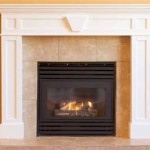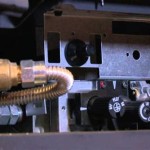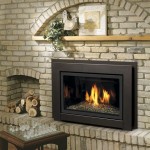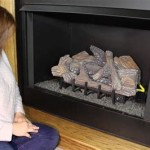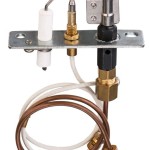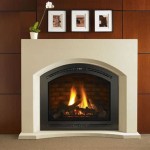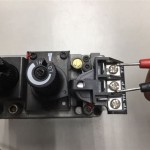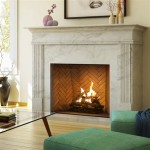Understanding Wood Burning Fireplace Box Sizes
The wood burning fireplace, a timeless symbol of warmth and comfort, remains a popular feature in many homes. Selecting the appropriate size for the firebox, the central cavity where the fire is built, is crucial for optimal performance, safety, and aesthetic appeal. This article will explore the various factors influencing firebox selection, delve into common size ranges, and discuss the implications of choosing an undersized or oversized firebox. Understanding these aspects will enable homeowners and builders to make informed decisions regarding their fireplace design.
Factors Influencing Firebox Size Selection
Several key factors must be considered when determining the ideal firebox size for a wood burning fireplace. These include the room size, desired heat output, fuel type, and aesthetic preferences. Each of these factors plays a significant role in ensuring the fireplace functions efficiently and safely while complementing the overall design of the living space.
The size of the room the fireplace will heat is a primary consideration. A larger room naturally requires a larger firebox to generate sufficient heat. Conversely, an excessively large firebox in a smaller room can lead to overheating and discomfort. Calculating the room's volume, taking into account the length, width, and height, provides a starting point for estimating the necessary heat output. Heat output is typically measured in British Thermal Units (BTUs). Firebox size is directly correlated to the amount of wood that can be burned, and thus, the BTU output. A qualified fireplace installer can perform a heat loss calculation to determine the specific BTU requirements for the room.
The desired heat output is closely linked to room size but also incorporates the homeowner's preferences. Some individuals prefer a roaring fire that provides substantial heat, while others prioritize a more moderate and ambient warmth. Consider the climate in which the home is located. Homes in colder climates will require fireplaces capable of generating more heat than those in milder climates. Additionally, consider the level of insulation in the home. A well-insulated home will retain heat more effectively, requiring a smaller firebox compared to a poorly insulated home.
The type of wood to be burned also impacts the optimal firebox size. Different wood species have varying densities and burn rates. Hardwoods, such as oak and maple, are denser and burn longer, producing more heat. Softwoods, such as pine and fir, burn more quickly and produce less heat. A larger firebox allows for burning larger pieces of wood or a greater volume of wood, accommodating different fuel types and burn preferences. If primarily burning hardwoods, a slightly smaller firebox might suffice, whereas if softwoods are frequently used, a larger firebox may be necessary to achieve the desired heat output and burn duration.
Aesthetic preferences also play a vital role in firebox size selection. The fireplace often serves as a focal point in a room, and its size should be proportionate to the overall space and design style. A large, imposing fireplace can be a striking feature in a grand living room, while a smaller, more understated fireplace may be more suitable for a cozy den. Consider the architectural style of the home. A traditional-style home might benefit from a larger, more ornate fireplace, while a modern-style home might favor a smaller, more minimalist design. The visual impact of the firebox should be carefully considered to ensure it complements the overall aesthetic of the room.
Common Firebox Size Ranges
Firebox sizes vary considerably to accommodate a wide range of room sizes, heating needs, and aesthetic preferences. Understanding common size ranges provides a useful framework for making informed decisions about fireplace selection. Fireboxes are typically measured in width, depth, and height, representing the internal dimensions of the fire-burning cavity.
Small fireboxes typically range from 24 to 30 inches in width, 12 to 18 inches in depth, and 20 to 24 inches in height. These sizes are suitable for smaller rooms, such as bedrooms or studies, where a moderate amount of heat is desired. They are also well-suited for supplemental heating purposes or for creating a cozy ambiance. Due to their smaller size, they typically hold less wood and require more frequent refueling.
Medium-sized fireboxes generally range from 30 to 36 inches in width, 18 to 24 inches in depth, and 24 to 30 inches in height. These are a versatile choice for medium-sized living rooms or family rooms, offering a balance between heat output and fuel efficiency. They can accommodate larger logs and provide a longer burn time compared to smaller fireboxes. Medium-sized fireboxes are a popular option for homeowners seeking a primary heating source or a visually appealing focal point.
Large fireboxes typically measure 36 inches or more in width, 24 inches or more in depth, and 30 inches or more in height. These sizes are suitable for large, open-concept living spaces or homes in colder climates where significant heat output is required. They can accommodate very large logs, providing extended burn times and reducing the need for frequent refueling. Large fireboxes often feature more elaborate designs and can be a dramatic architectural element in a room. However, they require more careful planning to ensure proper ventilation and prevent overheating.
In addition to standard rectangular fireboxes, other shapes and configurations are available, such as corner fireplaces or see-through fireplaces. Corner fireplaces are designed to fit into the corner of a room, maximizing space efficiency. See-through fireplaces, also known as double-sided fireplaces, are open on two sides, allowing the fire to be viewed from multiple rooms. These specialized designs require careful consideration of firebox size and placement to ensure optimal performance and safety.
Implications of Firebox Size: Undersized vs. Oversized
Choosing the wrong firebox size can have significant implications for the performance, safety, and efficiency of the fireplace. An undersized firebox may not provide sufficient heat, while an oversized firebox can lead to inefficient burning and potential safety hazards. Understanding these implications is crucial for selecting a firebox that meets the specific needs of the home and homeowner.
An undersized firebox, while seemingly a cost-effective option, can present several drawbacks. The primary issue is insufficient heat output. A small firebox may struggle to heat a larger room adequately, leading to discomfort and the need for supplemental heating sources. This defeats the purpose of having a fireplace as a primary or secondary heating source. Furthermore, an undersized firebox may require frequent refueling, as it can only accommodate a limited amount of wood. This can be inconvenient and time-consuming, especially during extended periods of cold weather. The aesthetic impact of an undersized fireplace in a large room can also be underwhelming, failing to create the desired focal point.
Conversely, an oversized firebox can also present problems. One of the main concerns is inefficient burning. An oversized firebox may not reach optimal burning temperatures, leading to incomplete combustion and increased creosote buildup in the chimney. Creosote is a flammable substance that can significantly increase the risk of chimney fires. Additionally, an oversized firebox can lead to overheating in a smaller room, causing discomfort and potentially damaging surrounding materials. Excess heat can also increase energy costs, as the heating system may need to compensate for the uneven temperature distribution. The cost of an oversized firebox is also higher, both in terms of the initial purchase price and the cost of installation.
Proper ventilation is essential for both undersized and oversized fireboxes. An undersized firebox may not generate enough draft to effectively remove smoke and combustion gases, leading to backdrafting and indoor air pollution. An oversized firebox, on the other hand, may create a draft that is too strong, drawing excessive amounts of air and cooling the fire, further contributing to inefficient burning. A correctly sized chimney and damper system are crucial for ensuring proper ventilation, regardless of the firebox size. A professional chimney sweep can assess the existing chimney system and recommend appropriate modifications to optimize performance and safety.
Ultimately, the ideal firebox size is one that strikes a balance between heat output, fuel efficiency, safety, and aesthetic appeal. Careful consideration of the factors outlined in this article, along with consultation with a qualified fireplace professional, will ensure that the selected firebox is well-suited to the specific needs of the home and homeowner. Investing in a properly sized and installed firebox will provide years of warmth, comfort, and enjoyment while minimizing potential safety hazards and maximizing energy efficiency.

The Proper Way To Measure Dimensions Of A Fireplace

Fireplace Dimensions Standard Sizes Explained

Wood Burning Fireplace Inserts 1 Stove Insert Dealer

Fireplace Dimensions Standard Sizes Explained

Fireplace Inserts Explained Typical Sizing Functionality More

Barbas Box 20 75 Free Standing Wood Burning Stove Bonfire

Fireplace Dimensions Gas Electric Outdoor

How Fireplace Inserts Work We Love Fire

36 Elite Made In America Fireplace Xtrordinair

A Step By Guide To Understanding Fireplace Inserts
Related Posts

